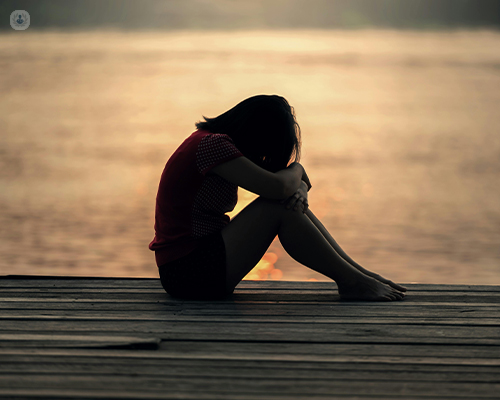What you need to know about interstitial cystitis
Escrito por:If it hurts or burns when you urinate, and you find that you need to urinate more frequently, you might think you have a urinary tract infection (UTI), but it is possible that you might have interstitial cystitis (IC) instead. Here to explain this condition in this article is a leading obstetrician and gynaecologist.

What is interstitial cystitis?
Interstitial cystitis is also known as bladder pain syndrome. The sensation of pain or discomfort is due to chronic inflammation of the bladder. The bladder wall can be completely swollen, and blood can sometimes appear in the urine (called haematuria). The constant inflammation of the bladder can result in scarring or stiffness, obstructing its capability to accommodate large volumes of urine. This leads to a high frequency of the urge to urinate throughout the day (and night), and sometimes pain during intercourse.
The pain will come and go in flares, and there might be months in between where there are no symptoms.
What causes interstitial cystitis?
IC differs from UTIs because there is no obvious infection of the bladder that causes the pain. When the urine of patients with IC is tested, the results will show that there is no bacterial or viral infection. There is no known cause of it, but it is known that it is more common in women, especially those between the ages of 20 to 30. IC can be diagnosed with several tests, such as a cystoscopy, urine tests, or an imaging scan like an ultrasound or an MRI.
How is interstitial cystitis treated?
Because there is no known cause, there is not yet a way to “cure” IC permanently. However, there are ways to manage the symptoms.
Lifestyle changes are typically recommended, such as regarding dietary and fluid consumption – such as reducing spicy foods and carbonated beverages and drinking more water – maintaining good personal hygiene, and abstaining from using deodorants or scents on the genitals. Some physical exercises, like holding in the urine, pelvic floor exercises, and posterior tibial nerve stimulation can train the body to ignore frequent urges to urinate.
Medicinal management includes pain medications, such as analgesics and painkillers, or a treatment to control the frequency of urination, called bladder instillations, where a catheter is used to infuse the bladder directly with formulas of hyaluronic acid or chondroitin sulphate that coat the inside walls of the bladder and act as a protective layer.
If you are experiencing long-term pain when urinating, consult with a specialist today via Top Doctors.


